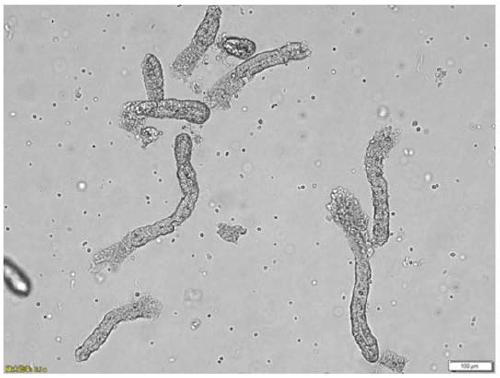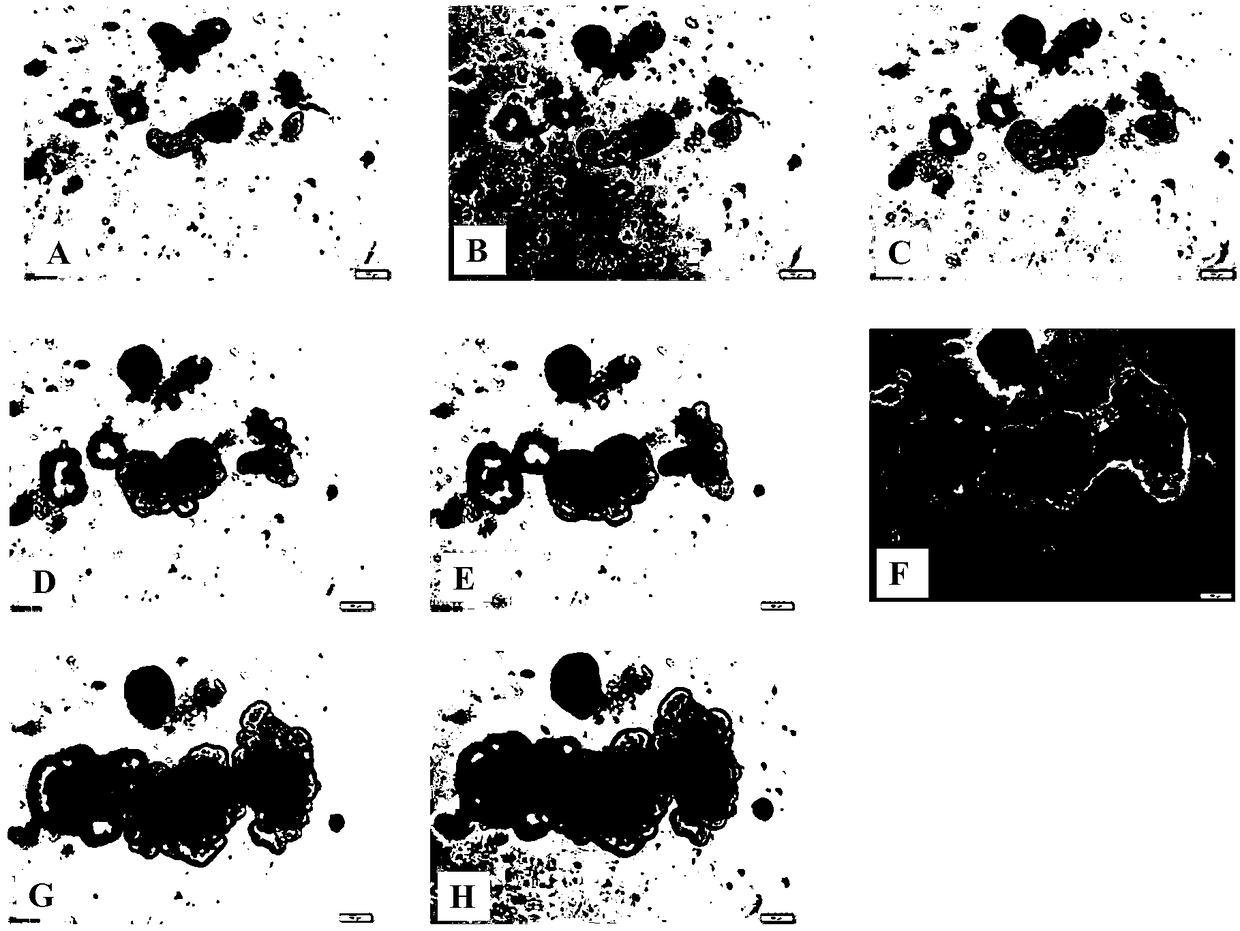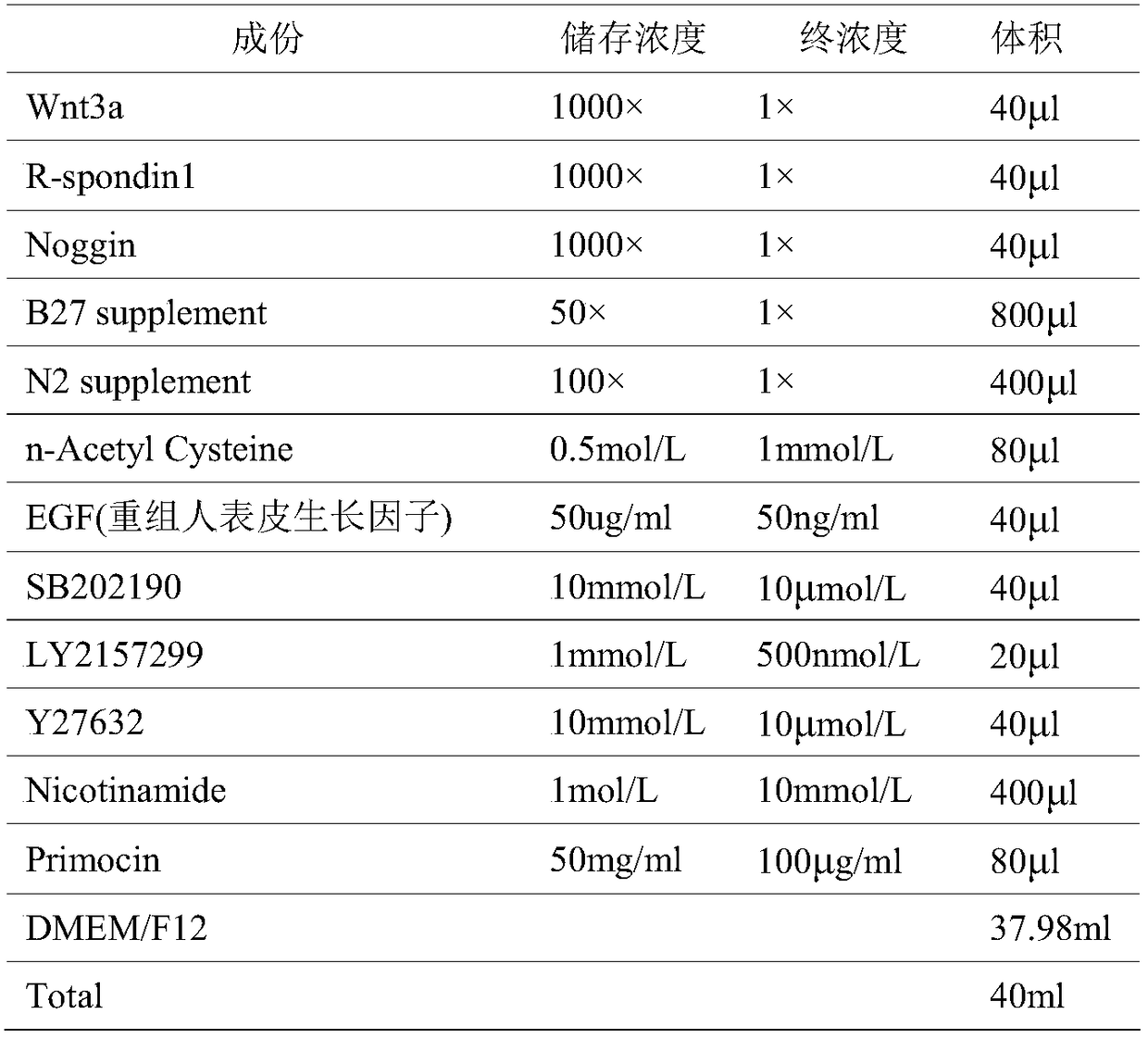Method of porcine intestinal crypt isolation and 3D type organ culturing
An organoid, pig intestine technology, applied in the field of pig intestinal crypt isolation, which can solve problems such as large impact, hollow organoid morphology, and 2D cell lines cannot simulate real situations.
- Summary
- Abstract
- Description
- Claims
- Application Information
AI Technical Summary
Problems solved by technology
Method used
Image
Examples
Embodiment 1
[0025] Relevant reagents and formula required by the present invention:
[0026] DMEM / F12 culture medium (product number: SH30023.01B) was purchased from Hyclone Company, USA.
[0027] Fetal bovine serum (FBS, article number: 10099141), N2 supplement (article number: 17502048), B27supplement (article number: 12587010), and EGF (article number: PHG0311) were purchased from Gibco, USA.
[0028] n-Acetyl Cysteine (article number: A7520), Nicotinamide (article number: N0636), and SB202190 (article number: S7067) were purchased from Sigma-Aldrich, USA.
[0029] LY2157299 (article number: S2230), Y27632 (article number: S1049) were purchased from Selleck, USA.
[0030] Primocin (product number: ant-pm-1) was purchased from InvivoGen, USA.
[0031] Matrigel glue (product number: 356231) was purchased from BD Biosciences, USA.
[0032] Wnt3a (article number: 5036-WN-500) and R-spondin1 (article number: 4645-RS-250) were purchased from R&D System, USA.
[0033] Noggin (article numb...
PUM
 Login to View More
Login to View More Abstract
Description
Claims
Application Information
 Login to View More
Login to View More - Generate Ideas
- Intellectual Property
- Life Sciences
- Materials
- Tech Scout
- Unparalleled Data Quality
- Higher Quality Content
- 60% Fewer Hallucinations
Browse by: Latest US Patents, China's latest patents, Technical Efficacy Thesaurus, Application Domain, Technology Topic, Popular Technical Reports.
© 2025 PatSnap. All rights reserved.Legal|Privacy policy|Modern Slavery Act Transparency Statement|Sitemap|About US| Contact US: help@patsnap.com



